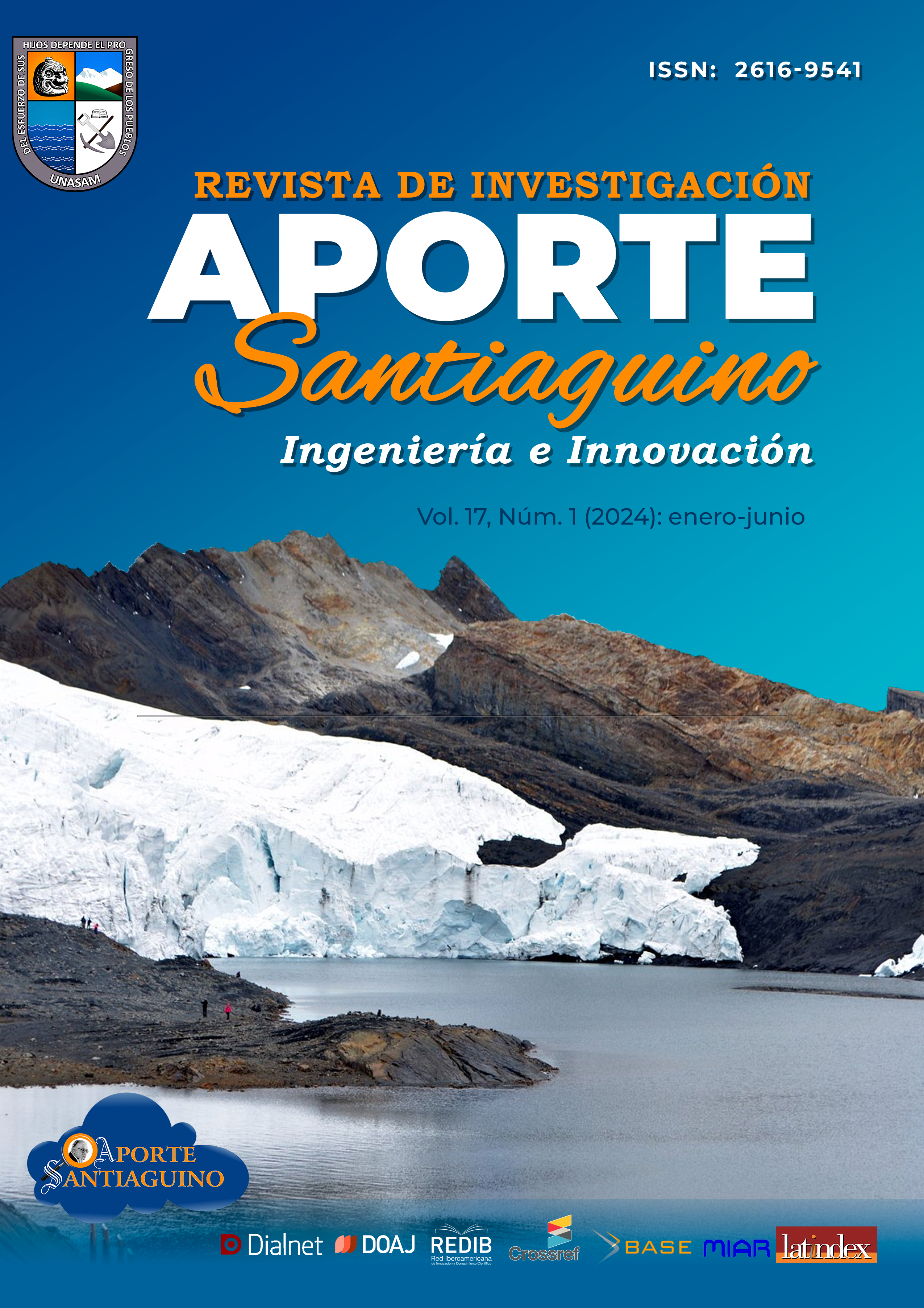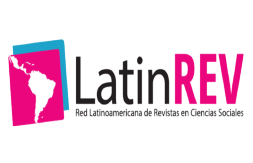Diversity and functional groups of associated arthropods in Aptenia cordifolia (L.f.) Schwantes at La Molina, Peru
DOI:
https://doi.org/10.32911/as.2024.v17.n1.1145Keywords:
Aptenia, Functional group, ArthropodsAbstract
The diversity of arthropods presents in Aptenia cordifolia (L.f) Schwantes was analyzed, based on species richness, abundance and trophic roles, in the green areas of the National Agrarian University La Molina (UNALM), in the district of La Molina, province of La Molina, Lima Region, with the coordinates 12°04′55″ South Latitude, 76°56′53″ West Longitude at 251 meters above sea level. It was evaluated once a week from September 2018 to February 2019, noting the arthropod population and the surrounding plants one meter away. The samples were duly identified and preserved; they are identified in a stereoscope at the UNALM Museum of Entomology. At each evaluation point an area of 0.25m x 0.25m is examined. In total, 74,017 arthropods were collected distributed in the class Arachnida (one order and one family) and Insecta (six orders and 14 families). According to the functional group, phytophages are comprised of ten species, predator with five, pollinator, parasitoid and varied feeding with one species. In addition, the following were categorized as the most important pest insects according to occurrence: Pulvinaria psidii Maskell, Pseudococcus longispinus (Targioni-Tozzetti), Saissetia coffeae (Walker), Platynota sp. and as the main natural enemy Scymnobius sp.
Downloads
References
Australian Government. (2004). Longan and lychee fruit from the People’s Republic of China and Thailand. En Final Import Risk Analysis Report (Número Part B). https://www.agriculture.gov.au/sites/default/files/sitecollectiondocuments/ba/memos/2004/plant/ll_finalb.pdf
Arguedas, M. (2006). Clasificación de tipos de daños producidos por insectos forestales. Primera parte. Kurú: Revista Forestal, 3(8), 1–6.
https://revistas.tec.ac.cr/index.php/kuru/article/view/518
CABI (2021). Pulvinaria psidii (escala de escudo verde). Banco de conocimientos PlantwisePlus, https://plantwiseplusknowledgebank.org/doi/full/10.1079/pwkb.species.12953
Chávez, D., & Arata, A. (2004). Control de plagas y enfermedades en el cultivo del olivo. En Unidad Operativa Territorial Caravelí [Programa Regional Sur]. Centro de Estudios y Promoción del Desarrollo. https://www.descosur.org.pe/wp-content/uploads/2014/12/Manual003.pdf
Cisneros, F. (1995). Las relaciones entre las plagas y las plantas. En Control de Plagas Agrícolas. Agencia Peruana del ISBN.
Díaz, C. (2018). Plan de manejo integrado de insectos, enfermedades y fisiopatias en aguacate Hass. Conselleria de Infraestructuras, Territorio y Medio Ambiente. https://images.engormix.com/externalFiles/6_MIPE%20AGUACATE%20CADC%20final.pdf
Díaz, F. (2017). Identificación de insectos fitófagos en especies leñosas ornamentales de las áreas verdes de la ciudad de Cajamarca [Tesis ingeniero, Universidad Nacional de Cajamarca]. https://repositorio.unc.edu.pe/handle/20.500.14074/1697
Furness, G. (1976). The dispersal, age-structure and natural enemies of the long-tailed mealybug, pseudococcus longispinus (targioni-tozzetti), in relation to sampling and control. Australian Journal of Zoology, 24(2), 159–167. https://doi.org/10.1071/ZO9760237
Gonzáles, C., Conde, L., Hernández, D., & Rodríguez, J. (2015). Actualización de la ocurrencia de artrópodos plagas y sus enemigos naturales asociados con Psidium guajava (L.) en siete localidades de Cuba*. CitriFrut, 32(2), 29–35.
https://doi.org/10.1017/CBO9781107415324.004
Granara, M., & Claps, L. (2003). Cochinillas (Hemiptera: Coccoidea) Presentes en plantas ornamentales de la Argentina. Neotropical Entomology, 32(4), 625–637. https://www.scielo.br/j/ne/a/mmwgsNnm6MWmzvj5kv9SqGC/
Herrera, J. (1961). Problemas entomológicos en el cultivo de los algodones Tangüis y Pima en el Perú. Medidas de control y su organización. Revista Peruana de Entomología Agrícola, 4(1), 58–66. https://sisbib.unmsm.edu.pe/BVRevistas/entomologia/v04/pdf/a09v04.pdf
Ibrahim, A. (1985). The effects of temperature on the development of Hemispherical scale, Saissetia coffeae (Walker). Pertanika, 8(3), 381–386.
http://psasir.upm.edu.my/id/eprint/2572/1/The_Effects_of_Temperature_on_the_Development_of.pdf
Joyo, G., & Narrea, M. (2015). Fluctuación poblacional de plagas insectiles en el cultivo de vid variedad Red Globe, en la zona de el Carmen- Chincha. Perú. Anales Científicos, 76(1), 99–105. https://revistas.lamolina.edu.pe/index.php/acu/article/view/770
Mestre, N., Hodges, G. S., Hamon, A., Takumasa, K., Herrera Oliver, P., Marquetti, M., & Hernández, A. (2015). Insectos escama (Hemiptera : Sternorrhyncha : Coccoidea) del Parque Natural Topes de Collantes, Sancti-Spíritus, Cuba y la relación con sus plantas hospedantes. World Insect Systematics, 0426, 1–27.
https://digitalcommons.unl.edu/cgi/viewcontent.cgi?article=1930&context=insectamundi
Mestre, N., Veitía, M., & Hodges, G. (2010). Los insectos escama (hemiptera: sternorrhyncha: coccoidea) presentes sobre plantas medicinales en Cuba. Fitosanidad, 14(4), 201–208. https://www.redalyc.org/pdf/2091/209118515001.pdf
Minshawy, A. El, & Moursi, K. (1976). Biological studies on some soft scale‐insects (Hom., Coccidae) attacking guava trees in Egypt. Zeitschrift für Angewandte Entomologie, 81(1–4), 363–371. https://doi.org/10.1111 / j.1439-0418.1976.tb04248.x
NC State Extension (1994). Orugas encontradas en flores y follaje. Publicaciones de extensión estatal de Carolina del Norte; NC State Extension. https://content.ces.ncsu.edu/insect-and-related-pests-of-flowers-and-foliage-plants/caterpillars-found-on-flowers-and-foliage
Organización de las Naciones Unidas (ONU). (2023). Crónica ONU. (N. Robbel, Editor). Obtenido de Los espacios verdes: un recurso indispensable para lograr una salud sostenible en las zonas urbanas: https://www.un.org/es/chronicle/article/los-espacios-verdes-un-recurso-indispensable-para-lograr-una-salud-sostenible-en-las-zonas-urbanas
Rojas, F., Bermúdez, G., & Jiménez, Q. (2006). Plantas ornamentales del trópico (primera). Editorial Tecnológica de Costa Rica.
RPP Noticias. (2020). Áreas verdes: Lima tiene un déficit de 56 millones de metros cuadrados. RPP Noticias. https://rpp.pe/peru/actualidad/areas-verdes-lima-tiene-un-deficit-de-56-millones-de-metros-cuadrados-noticia-1242505?ref=rpp
Sistema Nacional de Información Ambiental (SINIA). (2018). Superficie de área verde urbana por habitante en Lima Metropolitana. https://sinia.minam.gob.pe/indicador/998
Downloads
Published
How to Cite
Issue
Section
License
Copyright (c) 2024 Pamela Ramos Rivera, Germán Joyo Coronado, Alfredo Beyer Arteaga

This work is licensed under a Creative Commons Attribution 4.0 International License.




















